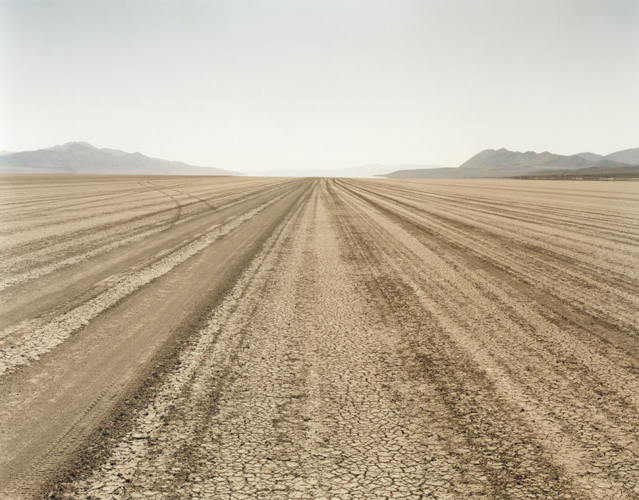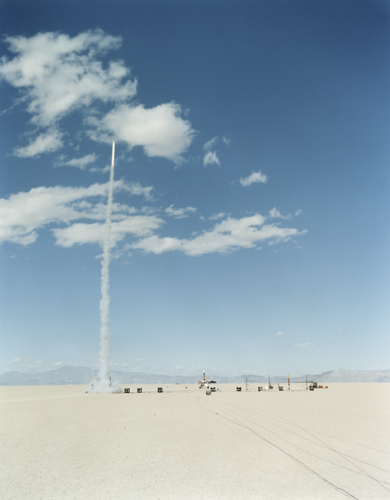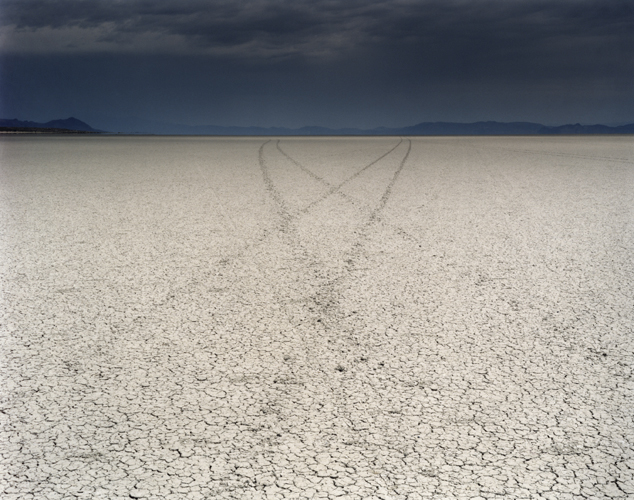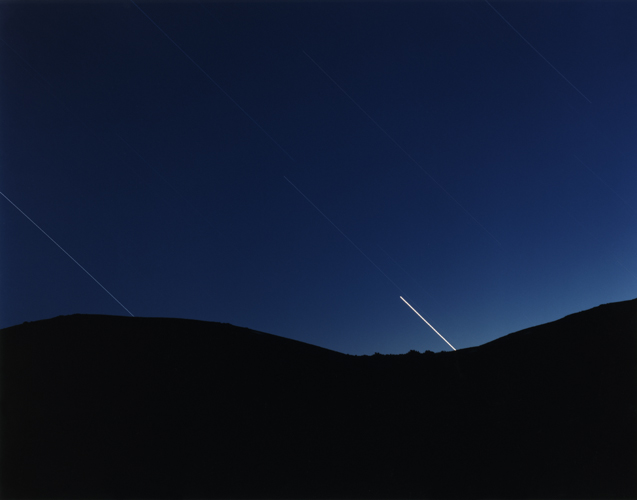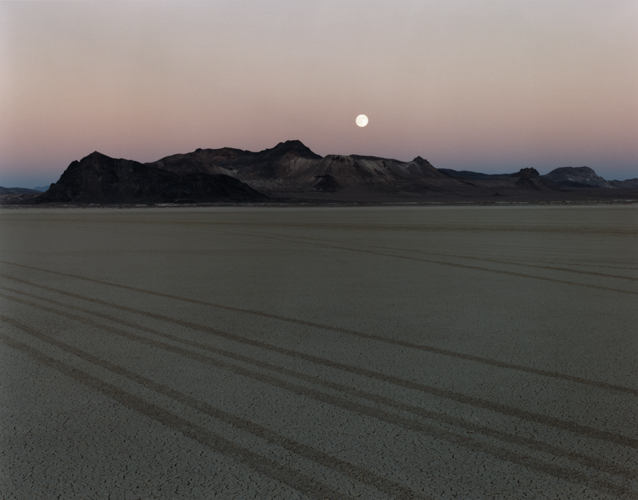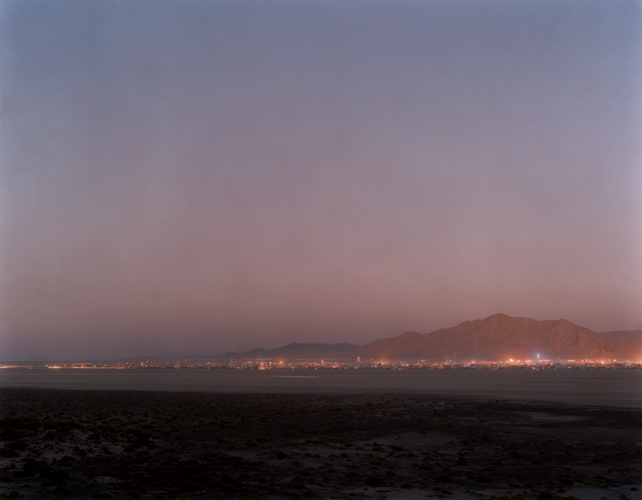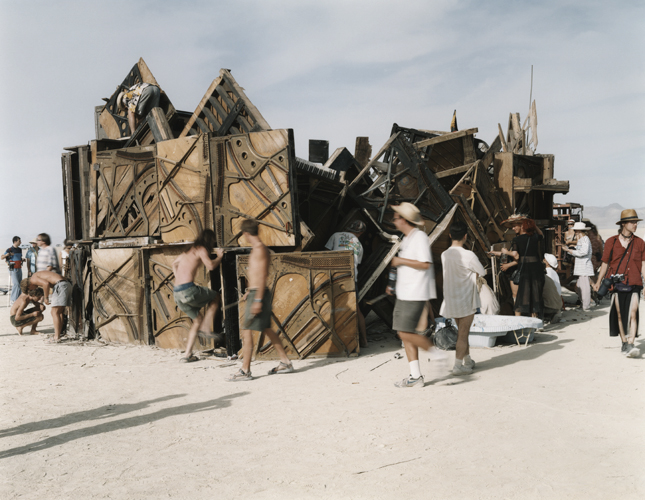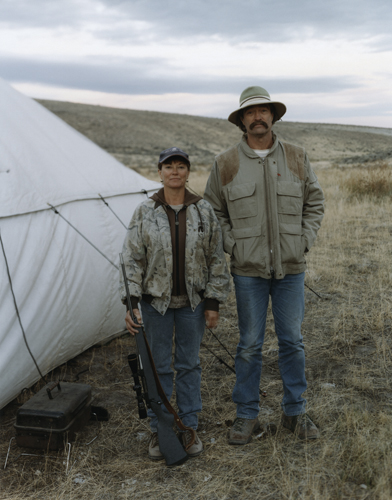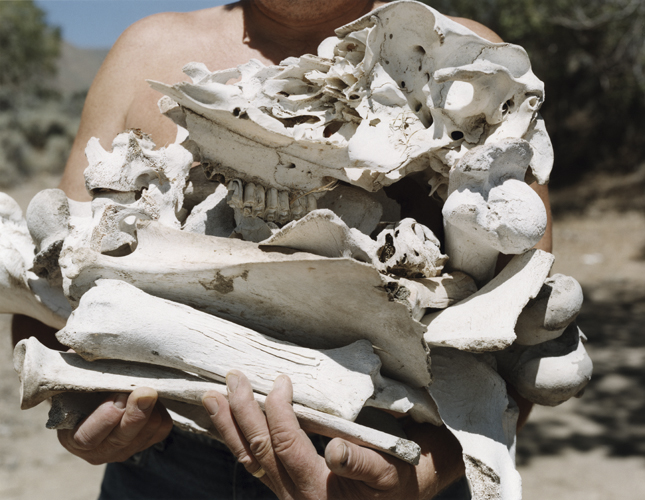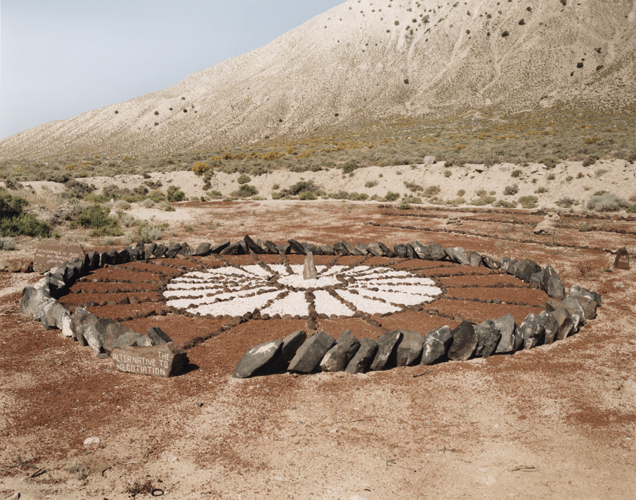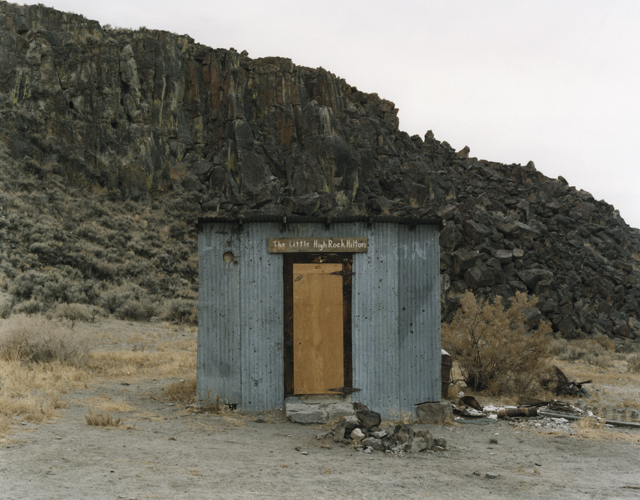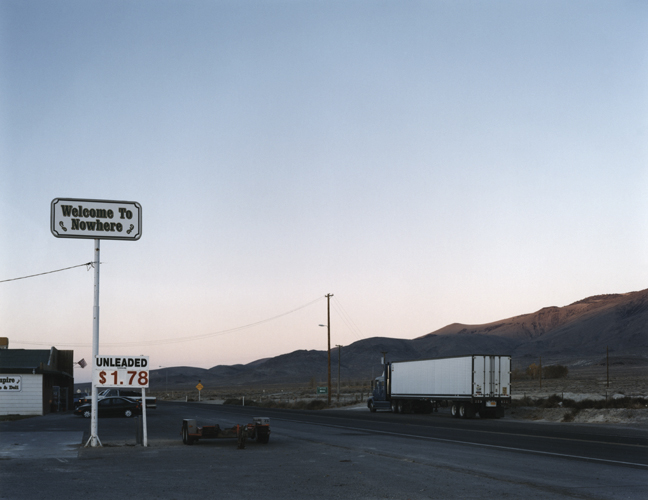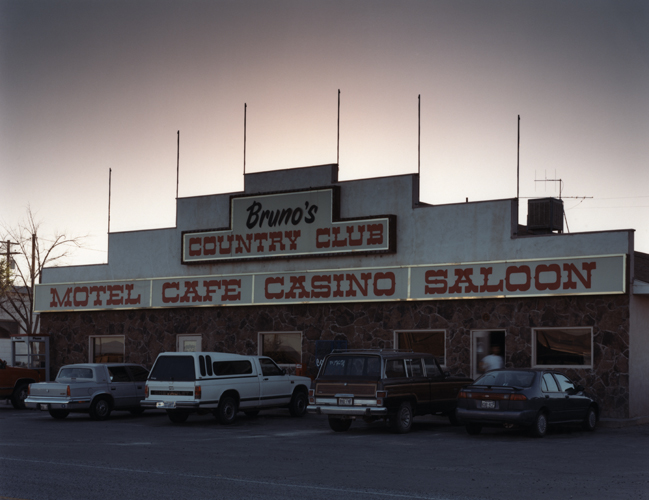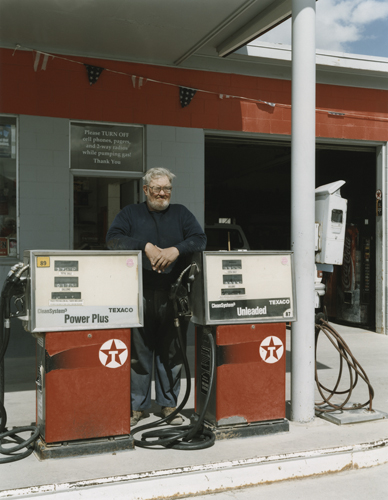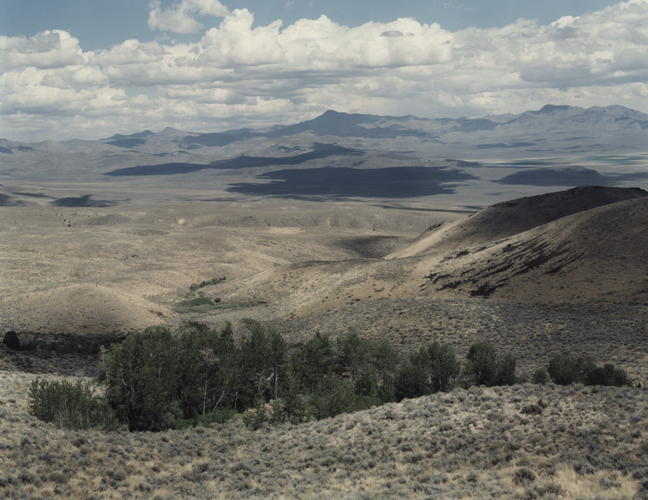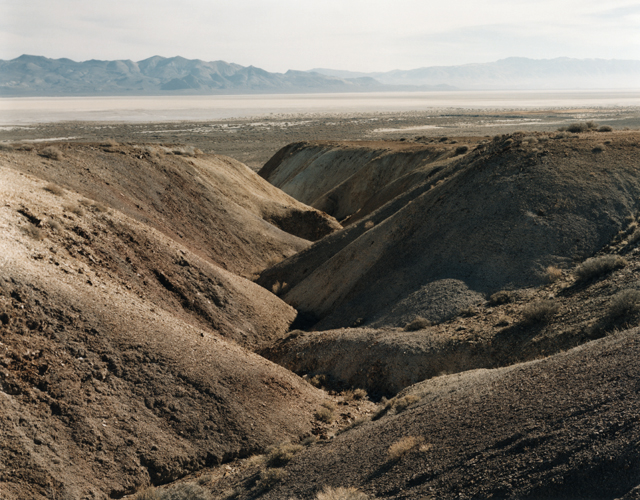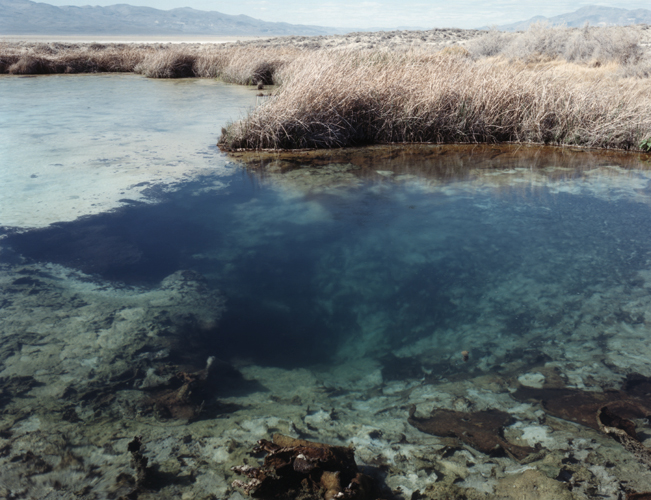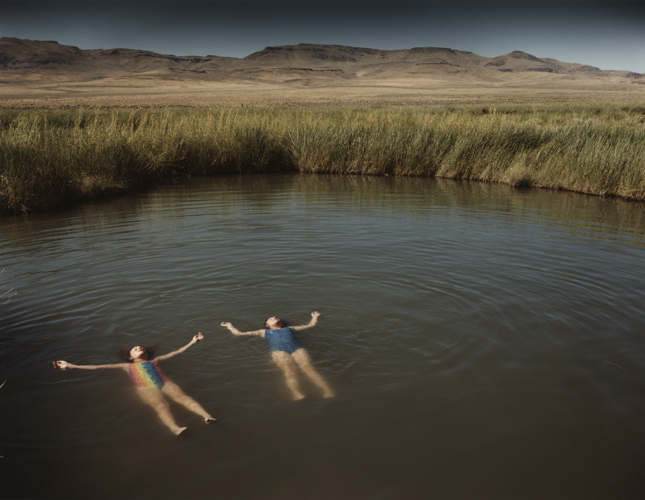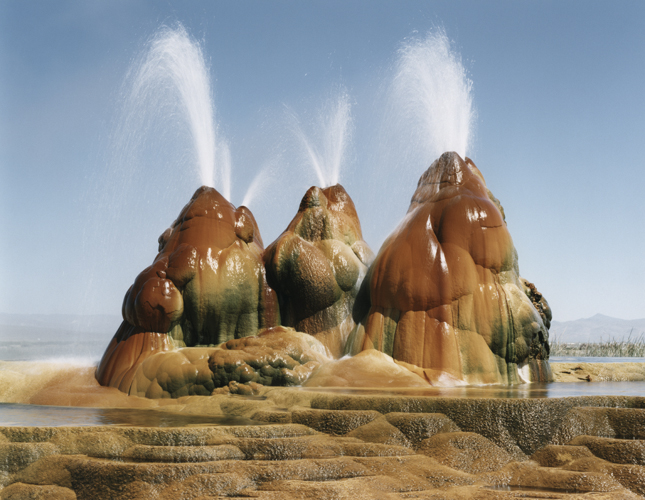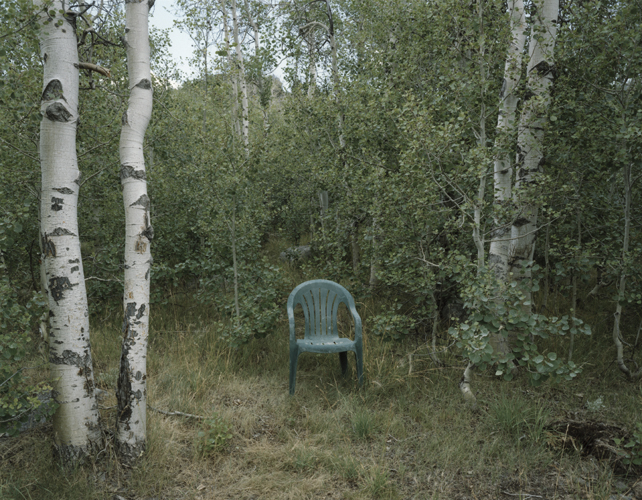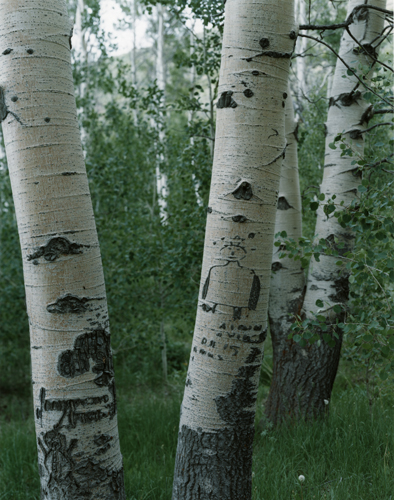Black Rock by Peter Goin
Black Rock
It was late afternoon and a ferocious wind blew. Dust devils swirled and danced before dispersing their sand and alkali debris over the dry lakebed. The bellows on my camera twitched in rhythm with the wind, and minute particles of dust seeped into every crack and crevice. On the horizon, large columns of dust obscured the volcanic rock outcropping. An ephemeral rain shower drizzled onto the playa, each drop exploding in a minute cloud of alkali dust.
The process of making these photographs has become for me a journey of rediscovery. Having spent more than twenty years traveling into the Black Rock, I have come to realize that this arid, often inhospitable, and unforgiving landscape possesses a character both spiritual and sublime. As these visitors from the Burning Man Festival soon discover, it is a land of contradictions that often defy description. The sound of quiet can be deafening. When the winds blow and the dust storms grow, even the most experienced traveler can become disoriented. Distances are deceiving as human scale becomes obscured and unpredictable. The smell of sage and hot springs sulfur is woven together. The dirt roads are laden with silken dust; combined with water, they turn into quagmires of grease-like mud. The rocks are sharp and rough, yet in the soft evening light the distant hills appear covered with velvet. At any moment, there may not be one person within ten square miles, yet every step reveals human history. Mirages are common, and nothing really is what it seems. This is a landscape defined by the image and absence of water.
As the sun set on a moonless night, creating a balance between land and sky, the winds died down. I slipped into the dark, mirror-like water of the springs, and felt the hot, slippery mud ooze between my toes. The tall, green reeds at the pool's edge obscured the horizon, and time, like a photograph, froze. The stillness made it hard to imagine the violent geologic forces that had shaped this range. After a few hours, my skin was wrinkled and I surrendered to the cool night air. Gathering my lawn chair, clothes, towel, and camera gear, I prepared to leave. A coyote howled, miles away. I located the Big Dipper and the North Star and noticed the crisp, ragged horizon line of the entrance to High Rock Canyon. In the lasting warmth, I realized once again how special, how human, how spiritual the Black Rock could be. [Peter Goin]
The ONE Exhibit "Black Rock" is taken from the book of the same name, which inscribes a visionary boundary around the storied Black Rock country, with original and historical maps and text by co-author Paul F. Starrs and photographs and text by Peter Goin. This project lyrically interprets a place that has become prominent as a setting for the Burning Man festival, held every Labor Day weekend. At that time, “Black Rock City” becomes one of Nevada’s largest cities, if only temporarily. Yet that event is only one relatively small aspect of the landscape and its geologic history.
Black Rock. Peter Goin and Paul F. Starrs. (Reno: University of Nevada Press, 2005)
XV, 273p.:ill. (chiefly color); 28 x 24cm. Maps on end-covers; includes bibliographical references and index. ISBN: 0874175917
